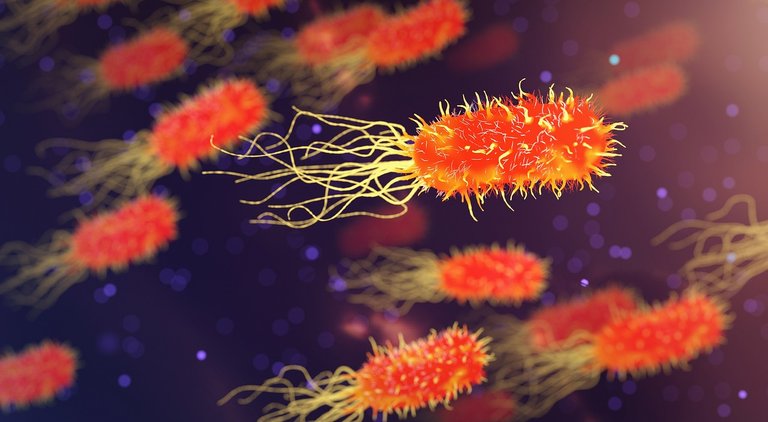People after reading @infinikxs blog post here in @stemsocial I have come to realize that a lot of things that takes place in history has a way of teaching us the quirkiest and most astonishing lessons, and today we're looking straight with a magnifying lens into the world of antibiotic resistance, a tale filled with bacteria defying human ingenuity.
Now you see, it's the early 1970s, bell-bottoms are all the rage, and doctors are strutting around with a swagger, thinking they've got bacterial infections on the ropes with the help of powerful bouncers known as antibiotics. Even bacterias thought they were done for frankly...But then, as if in a plot twist fit for a soap opera, the bacteria, with names like Staphylococcus aureus and Streptococcus pneumoniae, decided they'd had enough of this antibiotic pride. They put on their glittery resistance boots and hit the dance floor with moves that left doctors scratching their heads.
The reason behind this microbial rebellion? People were tossing antibiotics around like confetti at a New Year's Eve party, even when they didn't need them. It was like handing out party favors to uninvited guests at a wedding. These resistant bacteria decided to go global, hitching rides with unsuspecting travelers.
Enter Staphylococcus aureus, the ultimate party crasher. This bacteria had a knack for causing infections that could rival any Hollywood blockbuster. Around 20-40% of people with Staphylococcus aureus in their bloodstream were facing a grim fate. It was like a microbial mafia boss, wreaking havoc in hospitals and communities.
Penicillin, once the superhero of antibiotics, fell from grace thanks to a gene called blaZ. It created an enzyme called β-lactamase that broke penicillin like a magician revealing their secrets. Other genes, with names like antirepressor blaR1 and repressor blaI, played puppet master to this antibiotic escapade.
But the drama didn't stop there! Methicillin came onto the scene in 1961, only to be resisted by Staphylococcus aureus, leading to the birth of MRSA (methicillin-resistant Staphylococcus aureus). It was like the bacteria saying, "You can't sit with us!" The gene mecA and a genetic phenomenon called SCCmec made MRSA resistant to methicillin.
Then came quinolone resistance, which felt like a plot twist you never saw coming. MRSA decided it needed more resistance, so it made changes to its DNA, rendering antibiotics useless. It was like a superhero turning to the dark side, with its powers becoming its own kryptonite.
Vancomycin, the last resort for treating MRSA, faced its own rebellion. Enter VISA (vancomycin intermediate-resistant S. aureus) and VRSA (vancomycin-resistant S. aureus), two bugs that decided vancomycin wasn't cool anymore. VISA changed its cell walls, locking out vancomycin, while VRSA borrowed a piece of DNA from another bacteria, Enterococcus faecalis, and laughed in the face of the once-mighty antibiotic.
As we ran out of new drugs, scientists and doctors donned their lab coats like action heroes preparing for battle. They created new drugs like quinupristin-dalfopristin, linezolid, and daptomycin to take down the resistant staphylococci. It was like watching chemists concocting magical potions to defeat the microbial dragon.
But the scientists weren't satisfied with just new drugs; they explored the very DNA of bacteria to find chinks in their armor. They studied their inner workings, like detectives solving a mystery, and identified the Achilles' heels of these cunning microbes. It was like discovering the hidden traps in a labyrinth.
Some brilliant minds even pondered ways to prevent the bacteria from causing trouble in the first place. They tried everything from special nose medicines to endopeptidase, lysostaphin, or phage lytic enzymes. It was like scientists turning into microbial exterminators.
And let's not forget the vaccine warriors! They designed vaccines targeting parts of the bacteria that helped them wreak havoc. It was like arming ourselves with shields to deflect the bacteria's infectious arrows.
So, in this microbial battle of epic proportions, where bacteria and antibiotics clashed like Titans, we find ourselves at a crossroads. The dangers of antimicrobial abuse loom large, threatening our very existence. But in our hands lies the power to restrain, to protect, and to break this perilous chain.
As humans, let us unite to safeguard our future, to preserve our defenses, and to keep infections out of sight. For if we heed the wisdom of this microbial tale, we can ensure that the era of miracle drugs doesn't sow a dire seed. So, let us be the guardians of antibiotics, the defenders of health, and let our resolve be the best in this microbial fight.
Thanks for reading, Sayonara
- https://www.cdc.gov/drugresistance/about/how-resistance-happens.html
- https://www.who.int/news-room/fact-sheets/detail/antibiotic-resistance
- https://www.betterhealth.vic.gov.au/health/conditionsandtreatments/antibiotic-resistant-bacteria
- https://www.cdc.gov/drugresistance/about/how-resistance-happens.html
- https://www.ncbi.nlm.nih.gov/pmc/articles/PMC4378521/
- https://nyulangone.org/conditions/antibiotic-resistant-infections/types
- https://www.nhs.uk/conditions/antibiotics/antibiotic-antimicrobial-resistance/
- https://health.mo.gov/safety/antibioticresistance/generalinfo.php
First image Image by Gerd Altmann from Pixabay
Second image Image by Arek Socha from Pixabay


Congratulations @sam9999! You have completed the following achievement on the Hive blockchain And have been rewarded with New badge(s)
Your next target is to reach 28000 upvotes.
You can view your badges on your board and compare yourself to others in the Ranking
If you no longer want to receive notifications, reply to this comment with the word
STOPCheck out our last posts: